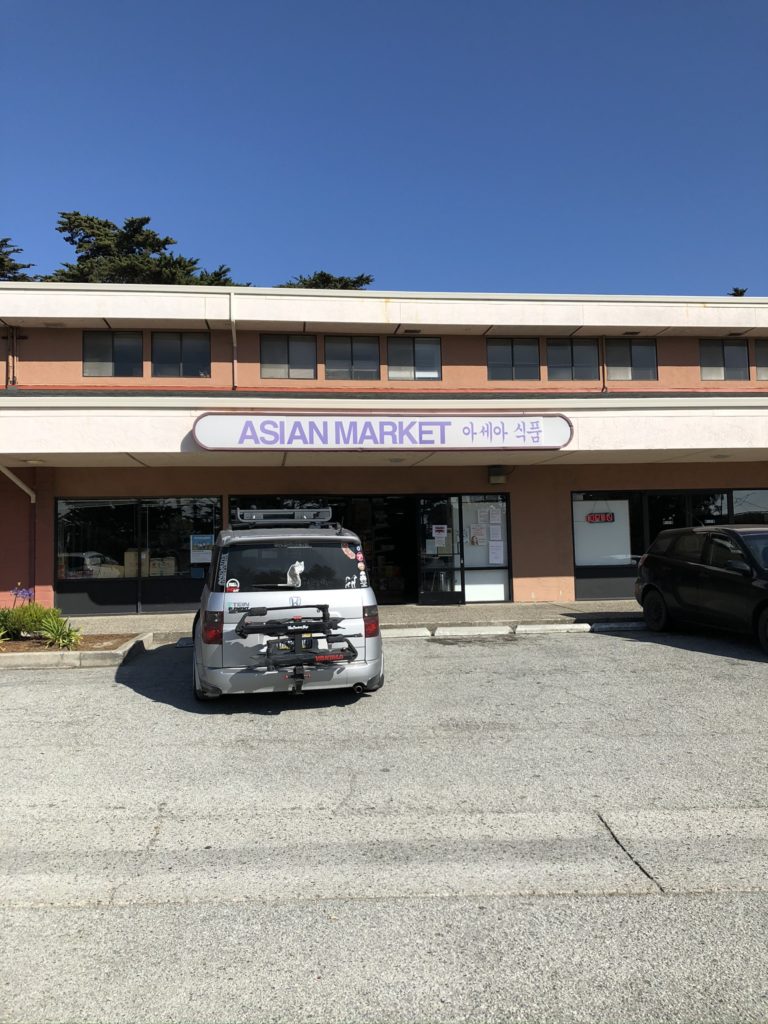
When a recipe mentions that a particular ingredient can be found at an Asian market, it triggers my eyebrows to rise as I wonder, “Which kind?”. Whenever I write a recipe and use that same pointer for cooks, I try to offer specifics. It’s easier in books and on this website, where I have space to clarify (e.g., head to a Chinese market for the best doubanjiang selection). However, it’s harder when I freelance for print, in which case there are tight column inches and page space restrictions.
What’s my beef? “Asian market” is a convenient catch-all standard term in food writing but honestly, it’s vague. The problem lies in this: Asia is huge -- comprising East Asia, Southeast Asia and South Asia and many languages and cultures.
A recipe may point cooks to sourcing fermented shrimp sauce (or paste) at an Asian market but I wouldn’t head to Mitsuwa, Bharat Bazar or Patel Brothers. That's because the Japanese and South Asian grocers would not likely carry it. My example is grossly obvious, but for cooks who are unfamiliar with the diversity of Asian cuisines, how helpful is it to point them toward the generic sounding "Asian market"? A market like the one above in Marina, California, hopes to capture a broad customer base despite its tight focus on Korean ingredients.
Because we don’t all look and cook the same, it helps to be a smart shopper. In an ideal world, there would be always more clarification to help you source ingredients. Until that happens, you're somewhat on your own. Here are my tips for negotiating Asian market grocery shopping. Of course, share your experiences too!
Specific Asian Markets
I’ve explored Asian markets for decades, and over the years, have loosely organized ones I’ve visited into three general groupings: Specific Asian Markets, Regional Asian Markets, and Mega-Asian Markets. Depending on your locale, you may have access to one, two, or all three types.
Specific Asian markets are typically located in enclaves that may be described as Chinatown, Koreatown, Little India, Little Saigon, Thaitown, Little Manila, and Japantown. They may also be in a neighborhood that caters to a particular Asian community. Such markets, like Thien Thanh in San Jose, are wonderfully hardcore, They're where you’d shop to source a particular fresh vegetable, spice, or condiment.
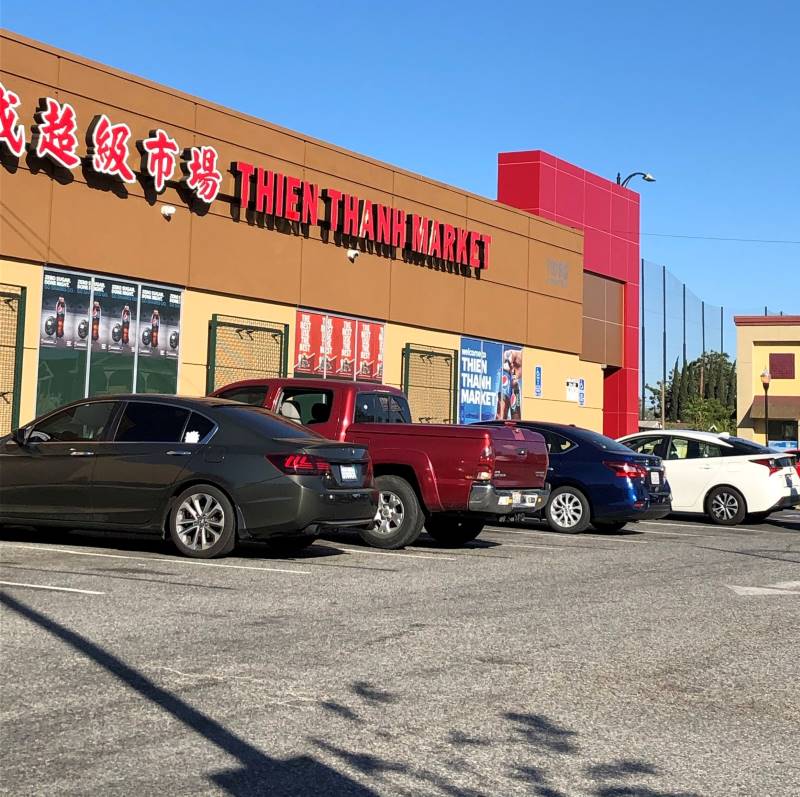
For example, you’ll find an incredible range of soy sauces at a Chinese, Japanese, or Korean market. There are many more interesting fish sauce options at a Vietnamese, Thai, or Filipino market. In places like Fresno or Saint Paul where there are many Hmong and Lao farmers, places such as Golden Bowl and Hmong Town Marketplace sell both common and unusual produce that’s locally sourced. You may get confused by different terms on labels but you go to explore and learn.
I once popped into a small South Asian market and bought jaggery studded with spices. The unpackaged, rustic discs sat in an unmarked cardboard box. When asked, the older gentleman behind the counter said that the spices made the sugar healthier to eat. I’m all for that and the unrefined sugar tasted better with that tip from him.
Specific Asian markets are often excellent for finding snacks! Below is jianbing being made fresh to order at Hometown Supermarket, a Chinese market in Birmingham, Alabama.
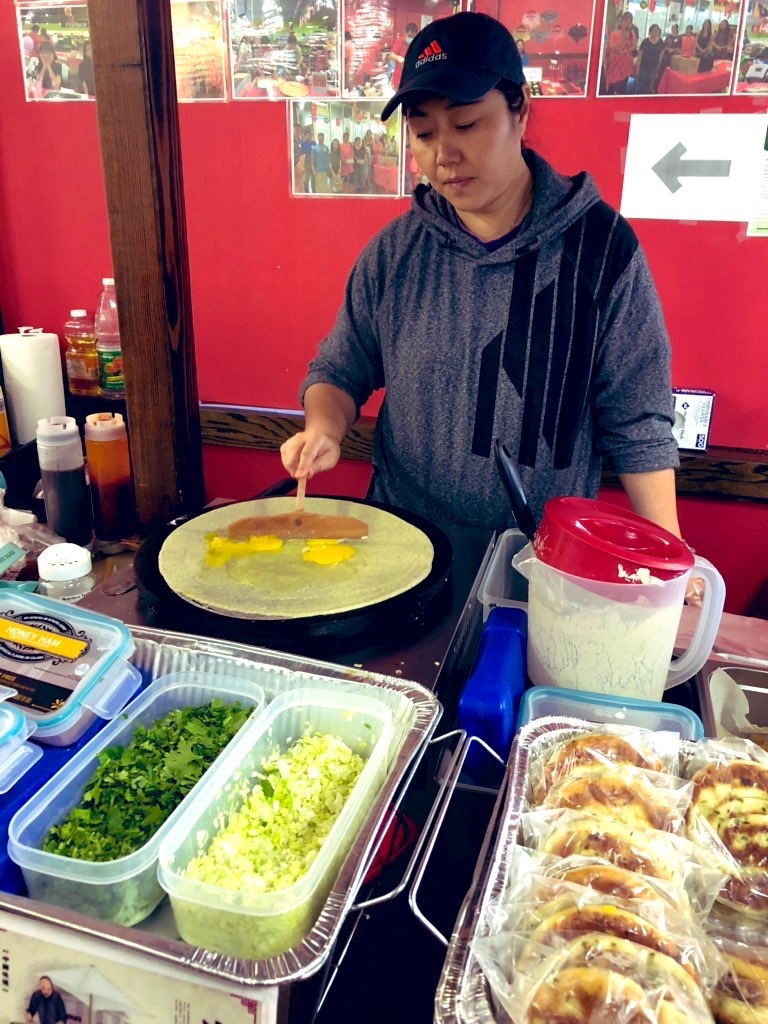
Regional Asian Markets
A regional Asian market offers more overlap, depending on its location and size. What’s often framed as a Chinese market likely carries inventory that you may use for cooking other Asian cuisines. China has influenced many cultures and even within the sphere of Vietnamese markets, many are owned by Vietnamese-Chinese people.
Ranch 99 (aka 99 Ranch) is a fantastic chain that offers a mostly Chinese inventory plus the basics for Japanese, Korean, Vietnamese, Thai, Filipino, and Malaysian/Singaporean fare. That said, if you shop at Ranch 99, you’ll find the more popular brands of East and Southeast Asian ingredients.
On a smaller and more interesting level, there are local, smaller chains like Lion Foods in the Bay Area. The location in Saratoga services a diverse Asian clientele, and with limited space in a medium-size market, it can only carry certain brands that are sure to sell. That explains why that location only sells reliable Three Ladies rice paper. The Lion Foods in the heart of the Viet community in Southeast San Jose sells Three Ladies, Tufoco (Three Bamboo) plus other brands of rice paper. And because many of the neighborhood’s residents are Latino, nearby there’s a Lion-Fresco market, where the inventory splits between Mexican and Chinese-Vietnamese.
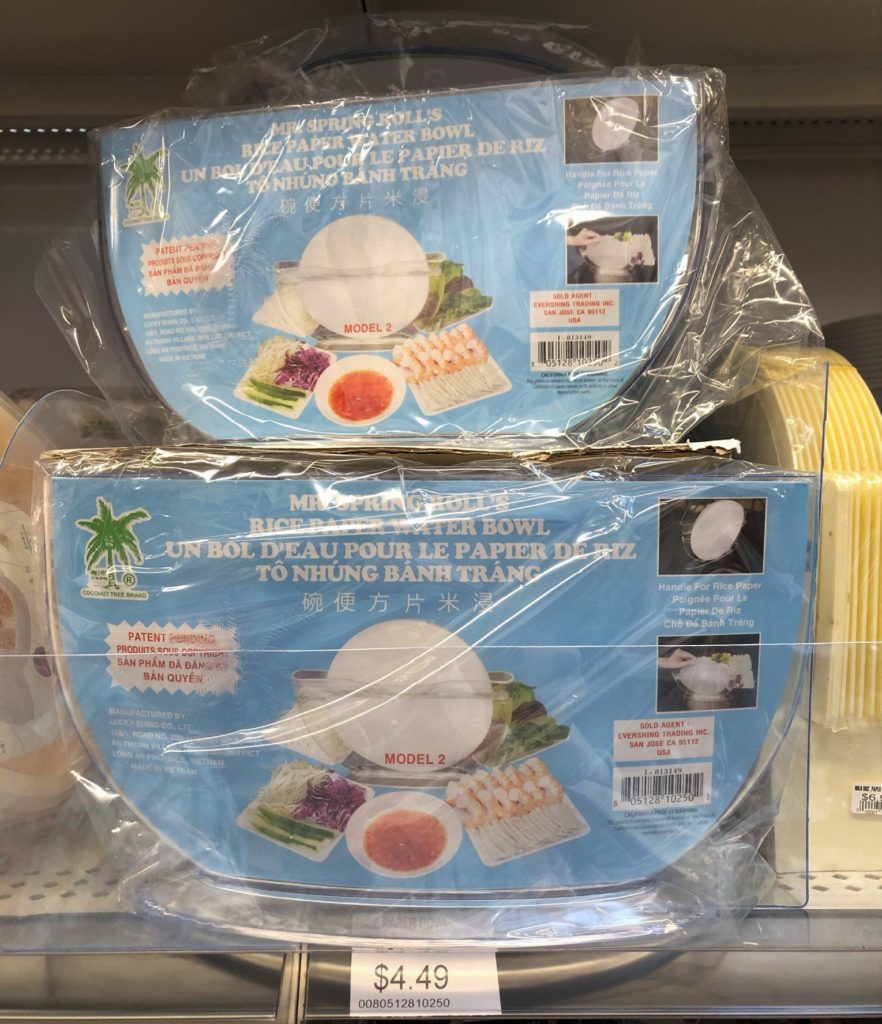
For fresh bunches of Viet herbs or potted herbs for my garden, I head to Thien Thanh or Dai Thanh in San Jose. Those smaller markets are very focused Vietnamese markets located about 10 minutes away from the larger Lion markets just mentioned. They are where you may find kitchenware like the Mr. Spring Roll water vessel (above) for dipping rice paper!
Similarly, in Seattle’s Chinatown-International District, Viet Wah has an incredible inventory that’s heavily Chinese and Southeast Asian. The friendly owner, Duc Tran, is Vietnamese Chinese, and along with the market. His family-owned company also imports products directly from Vietnam and other places in Asia. Viet Wah offers groceries for other Asian cuisines, but if I want a deep Japanese selection, I walk 15 minutes downhill to Uwajimaya. (And, I’d do the reverse for a better Viet selection.)
Mega-Asian and International Markets
You may ask, “What about H-Mart?” The Korean-American chain that started in 1982 in New York is incredibly fascinating. My first H-Mart experience was in 2007, in the Chicago suburbs at a Super H-Mart, a gigantic store that matched the size of the Home Depot across the way. That Niles location was over stimulating, the embodiment of efficiency and tidiness. H-Mart also has small, Korean-focused stores such as the one in Manhattan’s Koreatown on 32nd Street. The medium-size San Jose H-Mart caters to East Asian shoppers so there’s a very good stock of ingredients for Chinese, Japanese and Vietnamese cooking, along with the incredible Korean selection (peruse the radish options as well as the amazing fish sauce collection!).
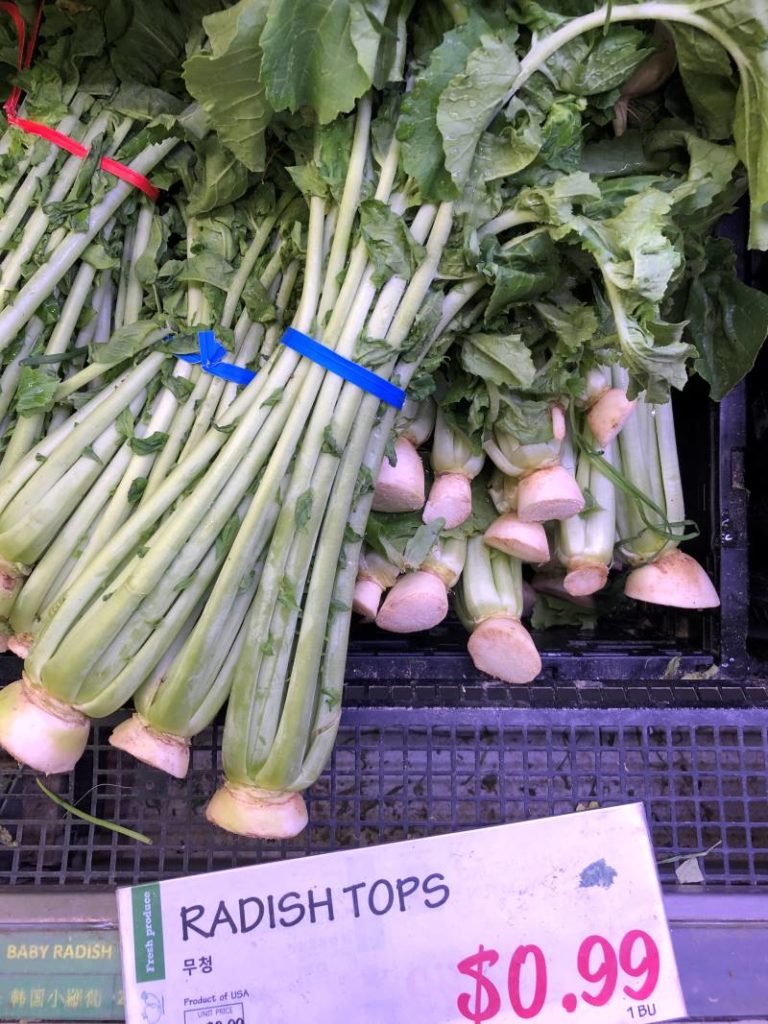
In the West and Southwest, Shun Fat markets have large footprints, some occupying spaces of former retailers such as KMart. My parents enjoy shopping at the supersized Shun Fats in Southern California's Little Saigon.
Then there are crazy outliers like LAX-C in Los Angeles Chinatown, a cavernous place for finding Thai groceries and cookware; there are fun takeout and snacks to be found too.
Don’t overlook mega “international markets” like International Marketplace in Las Vegas plus Buford Highway Farmers Market and Your Dekalb Farmer’s Market in the Atlanta area. They are stunningly huge and varied. Below is the Georgian bounty of la lot, wild betel leaf (in California, I pay double or triple the price shown).
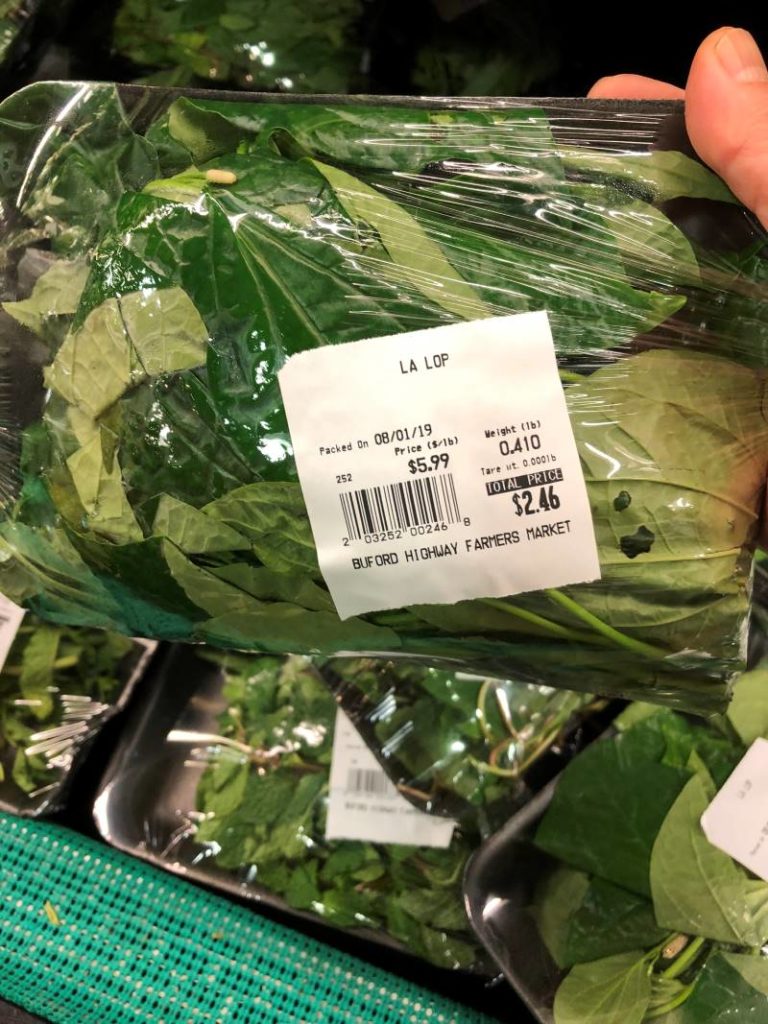
Shopping at any Mega Market is akin to going to a food Disneyland. Wear comfortable shoes.
How to Filter Your Asian Market Options
How should you proceed to find what you need? First, assess your shopping list. What cuisine(s) are you cooking? Are the ingredients super special or relatively popular staples? Be strategic and you may have a one-stop shopping experience!
For a specialty item like rice paddy herb (rau ngò om), go to a hardcore Viet grocer or a Chinese market that has a strong Southeast Asian clientele. If you need Thai basil, a regional or Mega market would carry it; however, it may be fresher at grocers that carry a solid Viet or Thai inventory. If you’re looking for special soy sauce for sushi, head to a Japanese market. Searching for atta flour means shopping at a South Asian grocery store.
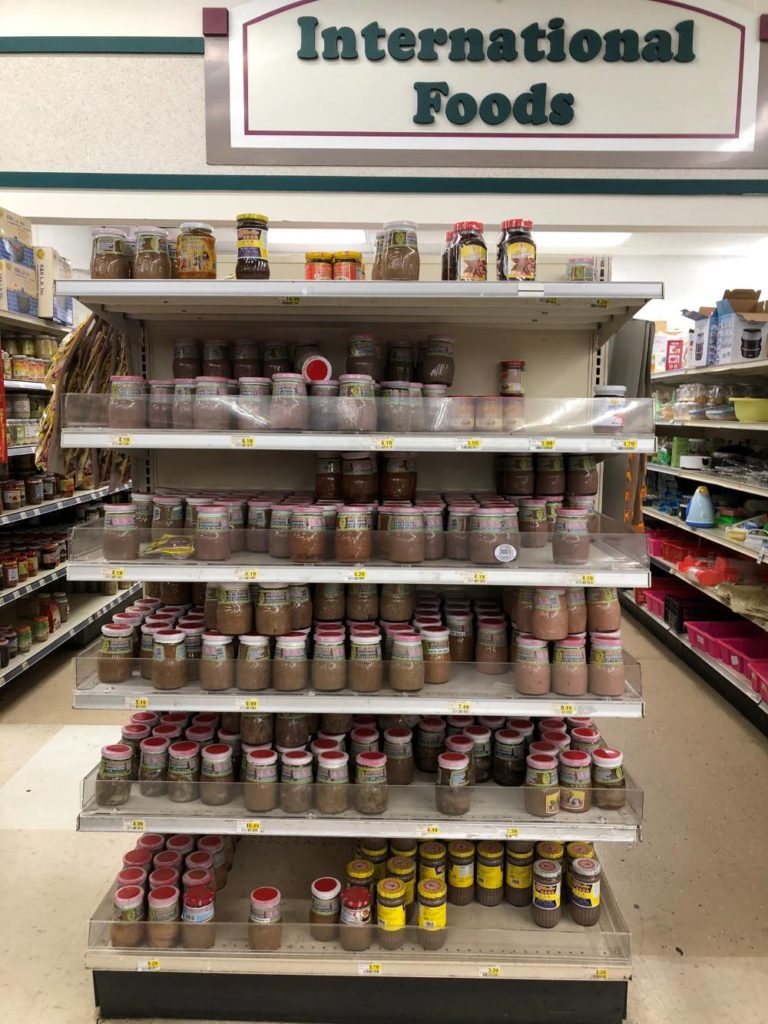
When I go to a new town, I search for “Asian market”. From there, I check out their business webpages, photos and reviews on Yelp, plus scan the surrounding businesses. I try to get a sense of the neighborhood around the market. What kinds of restaurants and markets are nearby? Who’s shopping there? Other than English, what other language(s) is the signage in?
It sounds complicated but Asian grocery shopping can be a fun cultural study. You never know what you’ll find, who you’ll talk to, and what you’ll learn.
What’s for sure is this: A one-kind-fits-all sort of Asian market does not exist. Perhaps if more people considered the variety and nuances of Asian markets, they’d understand that we don't all trace our roots to one place (China). We’re not a monolithic block. And, most importantly, that our cultural diversity enriches American society.
Do share your tips and experiences below!













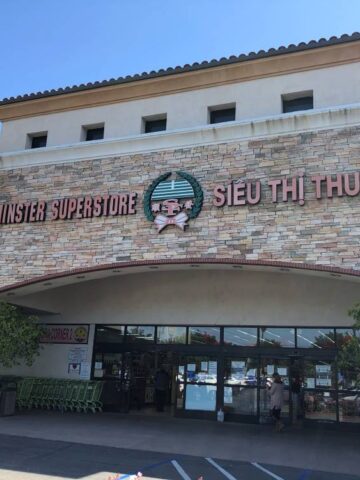
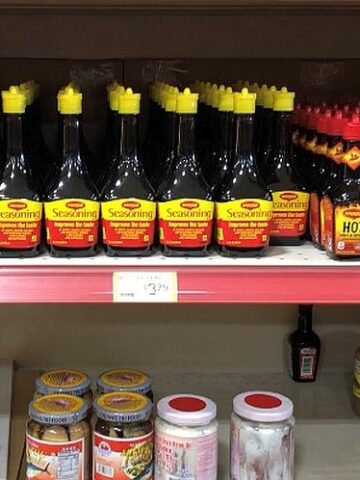

muerps says
I'm from East Germany, where Vietnamese people are the largest minority of Asian origin, so I'm used to the brands and types of food they offer. Now I live in the UK, where you're much more likely to find Chinese supermarkets and Vietnamese supermarkets are a rarity. The bigger Chinese supermarkets tend to have South-East Asian sections as well, but often with different brands than those that I'm used to from the East German Vietnamese supermarkets. On the other hand, South Asian supermarkets look quite similar and carry mostly the same brands - but in the UK, there are more and bigger South Asian supermarkets.
Also, as a fun fact when it comes to 'ethnic' supermarkets, as a German I quite like to go to Polish supermarkets. They are very similar to German supermarkets, certainly closer than UK supermarkets. A lot of the brands are the same, and there's considerable overlap in the type of produce they offer, and they sell most of their veg loose. There are things though where German and Polish supermarkets differ - you can't get soft quark in Polish supermarkets (they only carry firm twaróg), but on the other hand they have lots and lots of pickled mushrooms, which I'm gonna miss when I go back to Germany. For the pickled mushrooms alone I think I'll start shopping at Polish supermarkets in Germany.
Andrea Nguyen says
This is fascinating!!! Thank you for contributing a dispatch from Europe. Sizable South Asian markets in the UK totally makes sense. They're wonderful to explore. Your comment about the Viet community in East Germany led me to look it up online. It's fascinating -- the changes from the 1980s pre- and post-reunification. Thank you for enlightening me!
I used to go shop at a Polish sausage maker's shop in Santa Monica, California. It sold many interesting ingredients that were unfamiliar to me.
Gail says
Philadelphia has several large Vietnamese supermarkets. There is an interesting website about Asian markets in Philadelphia asianmarketsphilly.com. It also covers Central and North Asia, and investigates unusual dishes and ingredients. I think you’d like it.
Andrea Nguyen says
Gail -- what a terrific local resource in Philly! I didn't spend enough time there as our visit years ago was so brief. Thank you!
Lucas says
Super Cao Nguyen in OKC is amazing. It's like the size of a Walmart and they specialize in Asian foods across the spectrum, but also European and other foreign products. They have local farms they source specific herbs and vegetables from for restaurants and our thriving Asian district that I live in. And they've got an amazing selection of cheap kitchenware. It's my happy place, I'll go sometimes just to wander the aisles and explore for things I've never heard of before.
Andrea Nguyen says
Whoa! That's so fantastic to know about Oklahoma City! I think the South up to the Great Lakes have some of the best Asian markets in the nation. There's something about the distribution network in that part of the country. You're so incredibly lucky.
Thanks for the Super Cao Nguyen tip! Holy smokes, they have a gorgeous plant inventory too.
https://www.yelp.com/biz/super-cao-nguyen-oklahoma-city
Dana says
Shout out to HmongTown Marketplace! https://hmongtownmarketplace.com/
Andrea Nguyen says
Thanks for the linking to one of my happy places!
erica says
This is a great article. Thank you so much both for the culinary tips and the Social education that is unfortunately so necessary these days. I am going to go to the markets you mention in San Jose this week with a few of your recipes in hand!
Thank you again.
Andrea Nguyen says
Many thanks, Erica. Thien Thanh is kinda rocking it these days!
Bonnie says
I'm currently living in Mumbai India and left with the options of shopping on Amazon or luxury retailer Nature's Basket if I want to make South East Asian food. There are a few artisinal shops that make tofu as well but the pandemic has basically put them out of business. Thai food and sushi are popular with Western expats and the wealthier Indians living in metro areas so we are starting to see pan Asian restaurants spring up in the richer suburbs, with limited menus. Indo-Chinese food is really popular and you can find fussion dishes like veg hakka noodles and veg manchurian on the menu of regular Indian restaurants, as well as Indo-Chinese restaurants with dishes like Burmese pot rice, red or green Thai curry, tom yam, pad Thai, and yentafo. The immigrant populations of East and South East Asians are too small to support markets for other regional Asian cuisines. I was surprised to find East Indian lemongrass (Cymbopogon flexuosus) used for tea only, and no West Indian lemongrass (Cymbopogon citratus) used in cooking here. I'm experienced in Khmer cuisine and miss the availability of things like prahok, tuk trey, galangal, shrimp paste, kaffir lime, and mushroom soy sauce that were easily accessible to me in the US.
Andrea Nguyen says
Thank you for the dispatch from Mumbai, India. I'm sorry to hear about the tofu shops going out of business.
I've heard that lemongrass is used for cooking in India, and it's usual because the interaction between South and Southeast Asia is incredibly fluid. Viet curries are South Asian influenced and we put lemongrass it it.
May you stay safe and healthy in Mumbai, Bonnie!
Evelyn Vose says
I found the article to be interesting, but it did little more that mentioning an ingredient in a recipe that sends me to an "Asian market." I won't be moving to California soon so all of the references aren't helpful. What would be helpful for me is references to online sources and how to navigate through all of the brand names that come up. What's good? What isn't? Should I avoid this or that? Just my feedback. I enjoy reading everything you write and I know that you don't have to spend your time writing this blog - thank you so much for all that you do!
Andrea Nguyen says
I tried to name chains with presence that cover a decent amount of the nation -- H Mart, Ranch 99, etc.
On this website, I cover specific things like soy sauce, fish sauce, and rice paper -- which are linked above. I know what you need and once had an App that offered guidance on ingredients. Not enough people bought it and so it became kaput.
Thank you for noting that this blog takes a lot of time. It does but I enjoy interacting with people and offering long form information that well, can't fit in Instagram, Facebook, or Twitter. All the best, Evelyn!
Chey T says
I'm from Birmingham, AL and visit Hometown Supermarket for a lot of my grocery shopping. They are the city's largest Asian grocery market. While they mainly cater to Chinese cuisine, they are the best spot in town for Vietnamese ingredients and cater to a few other countries and regions as well. Red Pearl's Super Oriental Market is another popular market, but it is smaller and mostly stocks Chinese ingredients. All the specific markets are my favorite part of Birmingham.
Andrea Nguyen says
Hello to you in Birmingham! Red Pearl is smallish, and as I recall, the market is loaded with Southeast Asian groceries and some very interesting knives. The city is loaded with food resources and some darn good restaurants owned by kind people. You're incredibly lucky.